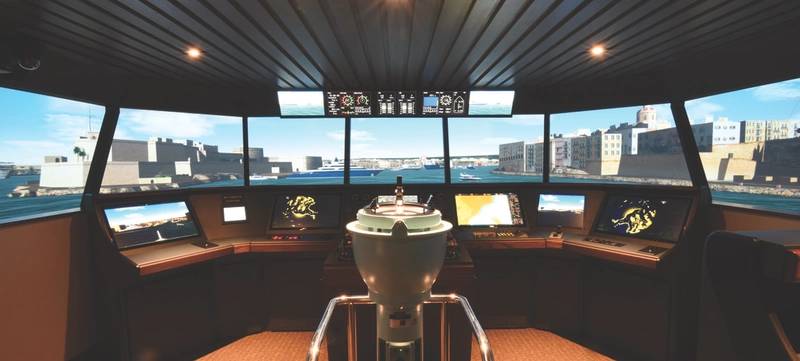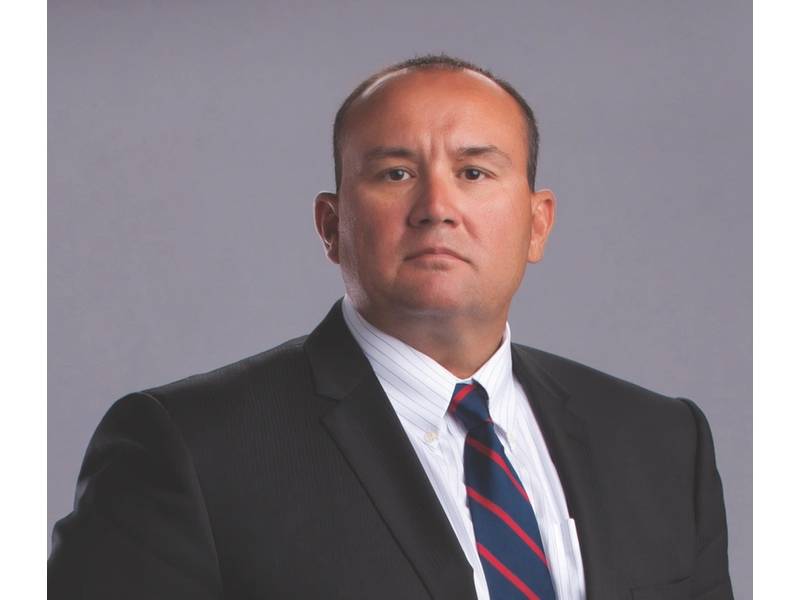Maritime Simulation: High-tech Meets Practical Skills
When talk turns to ‘Maritime Simulation’ visions of high-tech bridge simulators with seamless graphics and interwoven component simulators – engine room, DP systems, cargo loading – come to mind. But modern simulation is so much more, a wholistic visual, audio, tactile and cereberal experience that prepares mariners to deal with a bevy of real-world situations.
Modern maritime simulation has evolved rapidly, driven by exponential leaps in computer and graphic display power, a critical and valuable tool in the maritime training tool belt which helps to develop a mariner who comes ready with not only knowledge and a certificate, but the practical hand-on experience that is otherwise gained only through sea time. But maritime simulation is not only centered on fast computers, seamless displays and modern maritime equipment. The maritime simulation experience today is a multi-layered, multi-faceted endeavor which combines complex maritime navigation skills with the more mundane yet equally critical skills of communication, situational awareness and the ability to multi-task in any situation.
Communication on the bridge and between the bridge and traffic controllers is often where problems can occur, said Rosemary G. Mackay, Modeling and Research Coordinator, Curriculum Development & Lead Engineering Instructor, Resolve Maritime Academy, Inc. So simulation at Resolve Maritime Academy is not just about the technical side of simulation, rather the practical side too. Resolve aspires to learn their trainee’s strengths and weaknesses, overloading them with information to help test the boundaries of bridge performance, focus and response.
Offshore Energy
The energy slump has touched nearly every corner of the maritime market, and the simulation training sector is no exception, particularly painful as many had recently expanded to help fuel a fast-growing business.
When the energy crisis hit and the offshore market slowed, Resolve took a hard evaluation of its maritime simulation services and focused on efficiencies, said Mackay. “We do things in a very efficient scale. We had to, but at the same time we still have to deliver top quality.”
A few blocks away in Fort Lauderdale is another top-tier and long-tenured training school, Maritime Professional Training (MPT).
“The oil and gas market slowdown has definitely been felt by the mariners, industry, and training providers alike,” said Captain Ted Morley, Chief Operations Officer, Academic Principal, MPT. Tangibly MPT felt the pinch in student flow, with just more than 14,000 students coming through the facilities in 2017, “which is kind of an off-year for us” from MPT’s peak of 16,000+ students. “Our focus as a training center is to keep the mariners working,” said Captain Morley. “If they are in oil and gas and not working, they can get trained to work in another sector. It might not be in the industry that they want, it might not be at the salary that they want, but there are jobs out there.”
To illustrate his point, Captain Morley continued. “The IMO is forecasting a 148,000 shortfall in trained officers by 2025, so there is ample opportunity for a manpower shift to other segments. Many DPOs are finding employment in wind farm development projects and, as always, recruiting and training veterans remains a vital mission.”
And while the discussion turns gloomy when the topic of offshore energy arises, Captain Morley has a different take on the situation. “Offshore oil and gas is flat, but it’s not dead. There still is a fair amount of training going on, and the ships that are still working tend to be more technically advanced, and the crews have to be as well. You’re seeing a lot of the second and third tier vessels sidelined, but the 265- and the 300s … the bigger supply vessels are all working.”
Continued Investment
Regardless of the depth and breadth of any industry sector downturn, the elite maritime simulation training schools continue to invest in the latest gear to ensure that its facilities are in step with the evolution of technology on new ships and boat.
On the west coast at Cal Maritime, the university has upgraded its full mission bridge simulators and is also in the process of upgrading its iBest Lab, according to a school spokesperson. In addition, Cal Maritime instructors continue to hone their own skills with training from its simulator manufacturer. This continued investment has paid dividend, as Cal Maritime is better positioned to deliver a full training package to their clients. “Our longstanding relationship with a shipping client has expanded over the years to include not only training for their employees, but also assessments of their mates and captains. This includes bridge resource management, engine resource management, candidate assessments and evaluations; all of these programs use our campus simulators. In addition, a multi-year contract included use of our simulators for development of a study for the Coos Bay area with multiple industry partners, agencies, and local pilots participating in the exercises.”
Investment is not limited to the universities, as explained by Captain Morley. “As you know, MPT has just finished a $6m renovation and expansion project with new technology, upgrades in simulation, a new waterside lifeboat training facility, and a recently expanded Main Campus,” said Captain Morley. “This investment will soon be followed by an additional project due to break ground in 2019.”
This investment support MPT’s broad client base, which includes offshore oil and gas, cruise ships, ferries, mega yachts, fishing vessels, commercial deep draft and commercial inland. “All of those (industry sectors) ebb and flow at different rates; for example the container and short sea shipping business is moving well right now.
Captain Morley said that MPT’s clients are looking at ways to not only satisfy the regulatory requirements, but also increase retention within their workforce. “One of our clients is a global leader in the fishing industry and has worked with MPT to develop a program in which their crews are trained and promoted to higher paying jobs within the fleet. This has not only resulted in higher retention, but higher efficiency as these crews are already familiar with the vessels, the company, and the operations. Having the range of courses that MPT has allows them to single source all the training, and work to ensure it fulfills the non-regulatory company specific goals as well.”
The Resolve Training Academy counts its flexibility, particularly the flexibility of its main bridge to run multiple software platforms, as a key plank in its ability to serve a diverse and discerning client base. The Resolve’s Full Mission Ship Simulator can be re-configured in step with a specific company’s needs, and in fact Resolve aspires to incorporate the real equipment controls from the OEMs versus generic controls that come with a specific bridge.
To do this we partner with specific clients to get the equipment and maintenance upgrades, entering an exclusive loop which helps them and their clients, said Mackay. In addition, we can work with clients to specifically model their past mistakes, allowing the people on the bridge to step into the simulator and live or re-live something that happened in real life.
The Resolve Training Academy features a NT Pro 5000 Class A Full Mission Navigational Simulator with 220 degrees FOV on the main sim and 220 on the bridge wing, a bridge wing which can dock port or starboard.
Resolve in investing in a visual upgrade for the main bridge, a new 1920 x 1200 laser phosphor projection system which is scheduled to be delivered and online toward the end of March 2018.
(As published in the March 2018 edition of Maritime Reporter & Engineering News)


